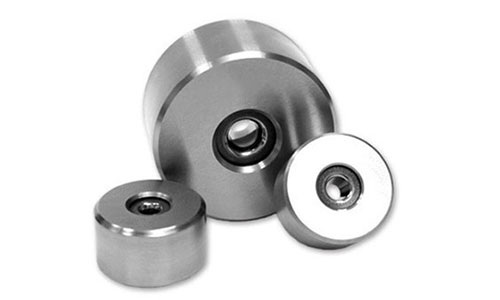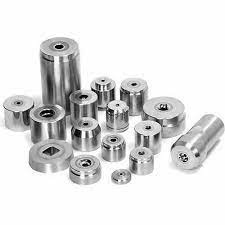Content Menu
● Understanding Carbide Drawing Dies
● Why Tungsten Carbide Is the Material of Choice
● U.S. Market Overview
● Leading Carbide Drawing Dies Manufacturers and Suppliers in the United States
>> 1. Reynolds Carbide Die Co., Inc. – Pennsylvania
>> 2. General Carbide Corp. – Pennsylvania
>> 3. H.B. Carbide – Michigan
>> 4. PSM Industries, Inc. – California
>> 5. Sancliff Inc – Connecticut
>> 6. Bronson & Bratton, Inc. – Connecticut
>> 7. Esteves Group USA – Georgia
>> 8. Fort Wayne Wire Die – Indiana
>> 9. United Die Company – New Jersey
>> 10. GLE-Precision – Michigan
● How Carbide Drawing Dies Are Manufactured
● Industry Innovations and Technology Trends
● Selecting the Right Carbide Drawing Dies Supplier
● Conclusion
● FAQ
>> 1. What are the main benefits of carbide drawing dies over steel dies?
>> 2. How can I extend the life of my carbide drawing dies?
>> 3. Can carbide drawing dies be produced for complex wire shapes?
>> 4. Which industries use carbide drawing dies most frequently?
>> 5. Are reconditioned carbide dies as reliable as new ones?
Carbide drawing dies are indispensable precision tools for wire, tubing, and rod production across industries such as automotive, aerospace, electronics, telecommunications, and construction. In manufacturing environments where tolerance requirements are extremely tight, and product quality cannot be compromised, carbide drawing dies manufacturers and suppliers in the United States play a vital role in delivering durable, high-performance solutions.
This article provides a comprehensive look into the U.S. carbide drawing dies industry, covering product fundamentals, manufacturing technologies, market trends, innovations, and leading suppliers. It also offers practical tips for selecting the right manufacturer and ensuring optimal tool performance in industrial production.

Understanding Carbide Drawing Dies
Carbide drawing dies are precision-engineered tools used in wire drawing—a process in which wire, rod, or tube is pulled through the die to reduce its cross-sectional area and achieve specific dimensions. These dies are commonly made from tungsten carbide, a sintered material known for its extreme hardness, wear resistance, and ability to maintain tight tolerances over extended production runs.
Common applications include:
- Drawing copper, aluminum, or steel wires for the electrical and automotive sectors.
- Shaping tubing for aerospace and medical components where precision is critical.
- Producing specialty profiles such as rectangular, hexagonal, or custom cross-sections.
Why Tungsten Carbide Is the Material of Choice
Tungsten carbide is a composite material created by combining tungsten powder with a cobalt binder. The result is a material that is almost as hard as diamond yet retains a degree of toughness.
Key advantages include:
- Exceptional Wear Resistance – Minimizes dimensional changes during operation.
- High Thermal Conductivity – Dissipates heat effectively during drawing operations.
- Corrosion Resistance – Performs well with nonferrous metals and specialty alloys.
- Extended Service Life – Reduces the frequency of die changes, improving uptime and lowering costs.
U.S. Market Overview
The United States is a major market for carbide drawing dies, supported by its strong industrial base, advanced technology adoption, and emphasis on quality-driven manufacturing. Demand is particularly strong from industries that require continuous, high-speed production of precise metal components.
Several factors are fueling growth in the U.S.:
1. Rising Demand for Fine and Ultra-Fine Wires – Growth in electronics, medical devices, and aerospace requires dies capable of producing extremely small-diameter wires.
2. Automation Trends – Smart factories increasingly rely on dies that can handle prolonged operation without frequent adjustment or replacement.
3. Material Advancements – Improved carbide grades and specialized coatings are extending lifespan and improving performance under harsh conditions.
4. Sustainability Initiatives – Many suppliers now offer reconditioning and recycling programs for worn carbide dies to reduce waste and costs.
Leading Carbide Drawing Dies Manufacturers and Suppliers in the United States
Here are some of the most respected carbide drawing dies manufacturers and suppliers in the U.S., recognized for their technical expertise, product quality, and industry reputation.
1. Reynolds Carbide Die Co., Inc. – Pennsylvania
Specializes in custom tungsten carbide dies for forming, stamping, and drawing applications. Known for flexibility in producing small to large batch runs and serving sensitive industries such as automotive and battery manufacturing.
2. General Carbide Corp. – Pennsylvania
Produces an extensive range of stamping and wire drawing dies, tube drawing inserts, and wear components. Holds ISO certifications and serves oil & gas, steel processing, and synthetic diamond manufacturing sectors.
3. H.B. Carbide – Michigan
Offers carbide blanks, wire drawing dies, and wear parts with precision powder-to-part production. Supports both AutoCAD and SolidWorks designs for custom projects.
4. PSM Industries, Inc. – California
Delivers carbide sizing and wear dies with a focus on lean manufacturing and just-in-time supply support. Serves OEMs seeking fast turnaround and consistent quality.
5. Sancliff Inc – Connecticut
Specializes in shaped and round tungsten carbide wire drawing dies, ideal for electronics, fiber optics, and nonferrous alloy applications.
6. Bronson & Bratton, Inc. – Connecticut
Known for custom draw dies, mandrels, and geometries that set industry benchmarks for accuracy.
7. Esteves Group USA – Georgia
Provides cost-effective tungsten carbide dies for bunching, stranding, guiding, and split die operations, widely used in electrical and construction industries.
8. Fort Wayne Wire Die – Indiana
A pioneer in precision wire drawing dies, with decades of expertise in consistent quality delivery.
9. United Die Company – New Jersey
Customizes carbide wire and special-shape drawing dies to meet specific industrial requirements.
10. GLE-Precision – Michigan
Produces carbide gages, bushings, blanks, and micro-tolerance die inserts for industries like medical devices and ammunition.

How Carbide Drawing Dies Are Manufactured
The production of a carbide drawing die involves several critical steps:
1. Powder Preparation – Tungsten carbide powders are blended with cobalt for binding strength.
2. Pressing and Compaction – Powders are compacted into die blanks under high pressure.
3. Sintering – Blanks are heated in a controlled furnace, transforming them into dense, hard solids.
4. Precision Machining – Fine shaping is achieved using CNC, grinding, and EDM technologies.
5. Polishing – The die bore is polished to an ultra-smooth finish for reduced friction during drawing.
6. Inspection – Dimensional checks ensure every die meets tolerance requirements.
7. Optional Coatings – Hard, low-friction coatings may be applied for specialty applications.
Industry Innovations and Technology Trends
Modern carbide drawing dies manufacturing is witnessing rapid innovation:
- Nanocoatings for added wear resistance.
- Hybrid Carbide Grades combining toughness with extreme hardness.
- 3D-Printed Preforms for rapid prototyping.
- AI-Powered Quality Control detecting micro-defects in real time.
- Reconditioning Services that extend die life and lower environmental impact.
Selecting the Right Carbide Drawing Dies Supplier
When evaluating carbide drawing dies manufacturers and suppliers, consider:
- Technical Expertise – Can they advise on die geometry and material choice for your application?
- Quality Certifications – ISO and other standards for quality assurance.
- Lead Time – Capability to meet urgent orders without sacrificing precision.
- After-Sales Service – Availability of regrinding, inspection, and repair services.
- R&D Investment – Commitment to continuous product improvement.
Conclusion
Carbide drawing dies are essential to precision manufacturing in industries from electronics to infrastructure. The right carbide drawing dies manufacturer or supplier can help improve production efficiency, product consistency, and cost-effectiveness. U.S. manufacturers set high benchmarks with their advanced technology, materials expertise, and commitment to quality. By choosing a supplier that aligns with your technical needs, delivery timelines, and quality expectations, you ensure long-term success in your manufacturing operations.

FAQ
1. What are the main benefits of carbide drawing dies over steel dies?
Carbide dies last significantly longer, resist wear better, and maintain tighter tolerances, reducing downtime and improving overall productivity.
2. How can I extend the life of my carbide drawing dies?
Regular maintenance, proper lubrication, correct die alignment, and timely reconditioning can greatly extend their service life.
3. Can carbide drawing dies be produced for complex wire shapes?
Yes, modern machining allows creation of dies for non-round cross-sections including flat, square, hexagonal, and custom geometries.
4. Which industries use carbide drawing dies most frequently?
Automotive, aerospace, electrical, medical device manufacturing, and construction sectors are among the biggest users.
5. Are reconditioned carbide dies as reliable as new ones?
If refurbished by a skilled manufacturer, reconditioned dies can perform nearly as well as new ones at a lower cost.
















